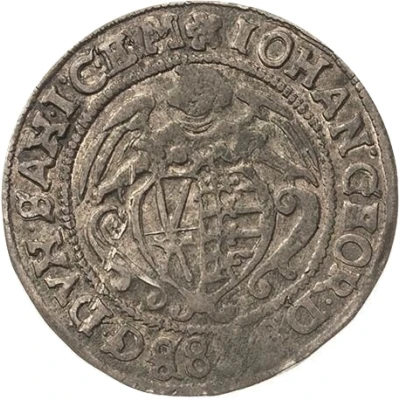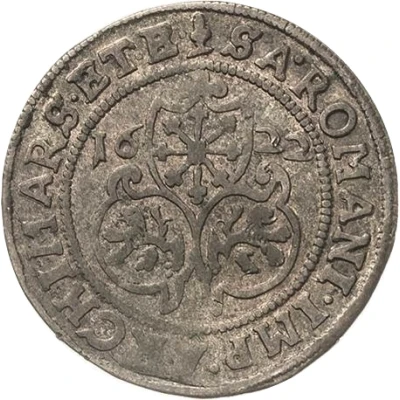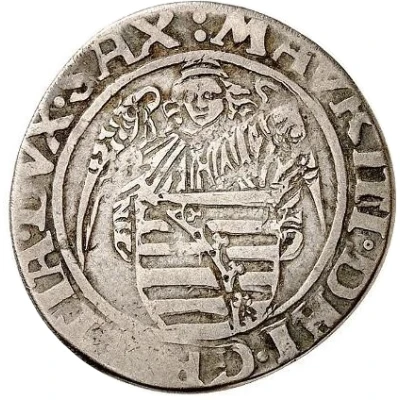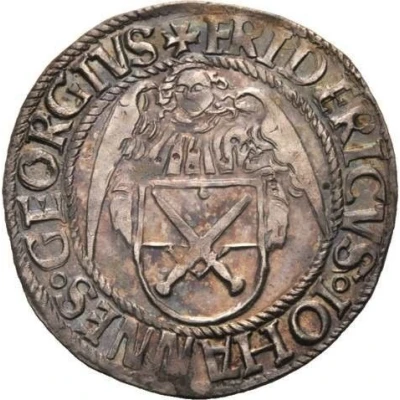
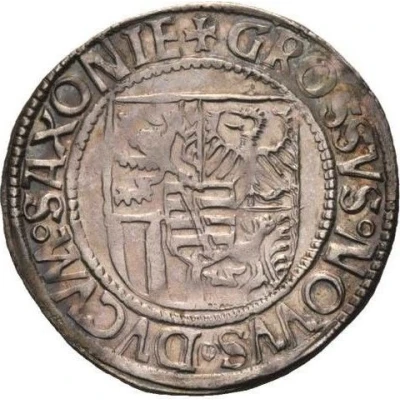

© Leipziger Münzhandlung und Auktion Manfred Höhn
1 Schreckenberger "Engelsgroschen" - Frederick III, John, and George ND
| Silver | 4.5 g | 29 mm |
| Issuer | Electorate of Saxony (Albertinian Line) (German States) |
|---|---|
| Issuer | Electorate of Saxony (Albertinian Line) (German States) |
| Prince elector | Frederick III (Friedrich III) (1486-1525) |
| Prince elector | Frederick III (Friedrich III) (1486-1525) |
| Duke | John (Johann) (1486-1525) George (Georg) (1500-1539) |
| Duke | John (Johann) (1486-1525) George (Georg) (1500-1539) |
| Type | Standard circulation coin |
| Type | Standard circulation coin |
| Years | 1507-1525 |
| Years | 1507-1525 |
| Value | 1 Schreckenberger (⅐) |
| Value | 1 Schreckenberger (⅐) |
| Currency | Thaler (1493-1805) |
| Currency | Thaler (1493-1805) |
| Composition | Silver |
| Composition | Silver |
| Weight | 4.5 g |
| Weight | 4.5 g |
| Diameter | 29 mm |
| Diameter | 29 mm |
| Shape | Round |
| Shape | Round |
| Technique | Hammered |
| Technique | Hammered |
| Orientation | Medal alignment ↑↑ |
| Orientation | Medal alignment ↑↑ |
| Demonetized | Yes |
| Demonetized | Yes |
| Updated | 2024-10-05 |
| Numista | N#328718 |
|---|---|
| Rarity index | 93% |
Reverse
5-fold arms in circle
Lettering: GROSSVS NOVVS DVCVM SAXON
Interesting fact
One interesting fact about the "Engelsgroschen" coin is that it was minted during a time of great religious and political upheaval in Germany. The coin was issued by Frederick III, John, and George, who were the ruling dukes of Saxony during the early 16th century. This period saw the rise of the Protestant Reformation, led by figures like Martin Luther, who challenged the authority of the Catholic Church and promoted religious reform. The coin's minting was likely influenced by these events, as the ruling dukes sought to promote their own religious and political agendas through the production of currency.
